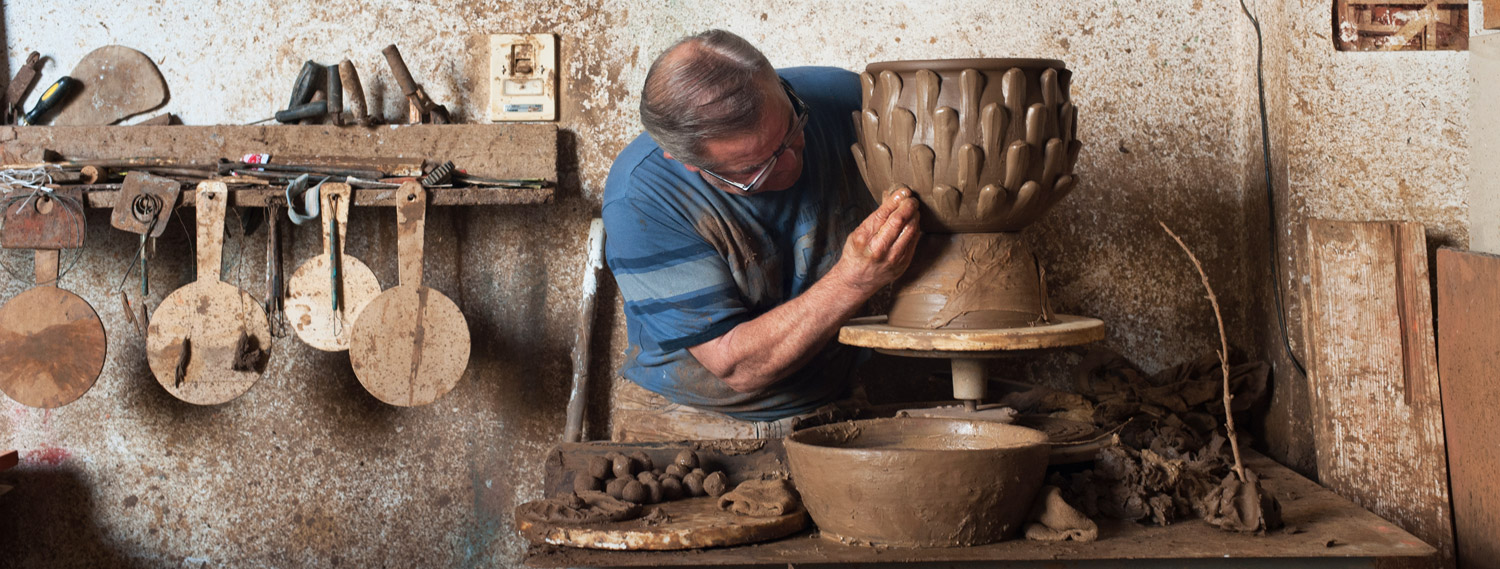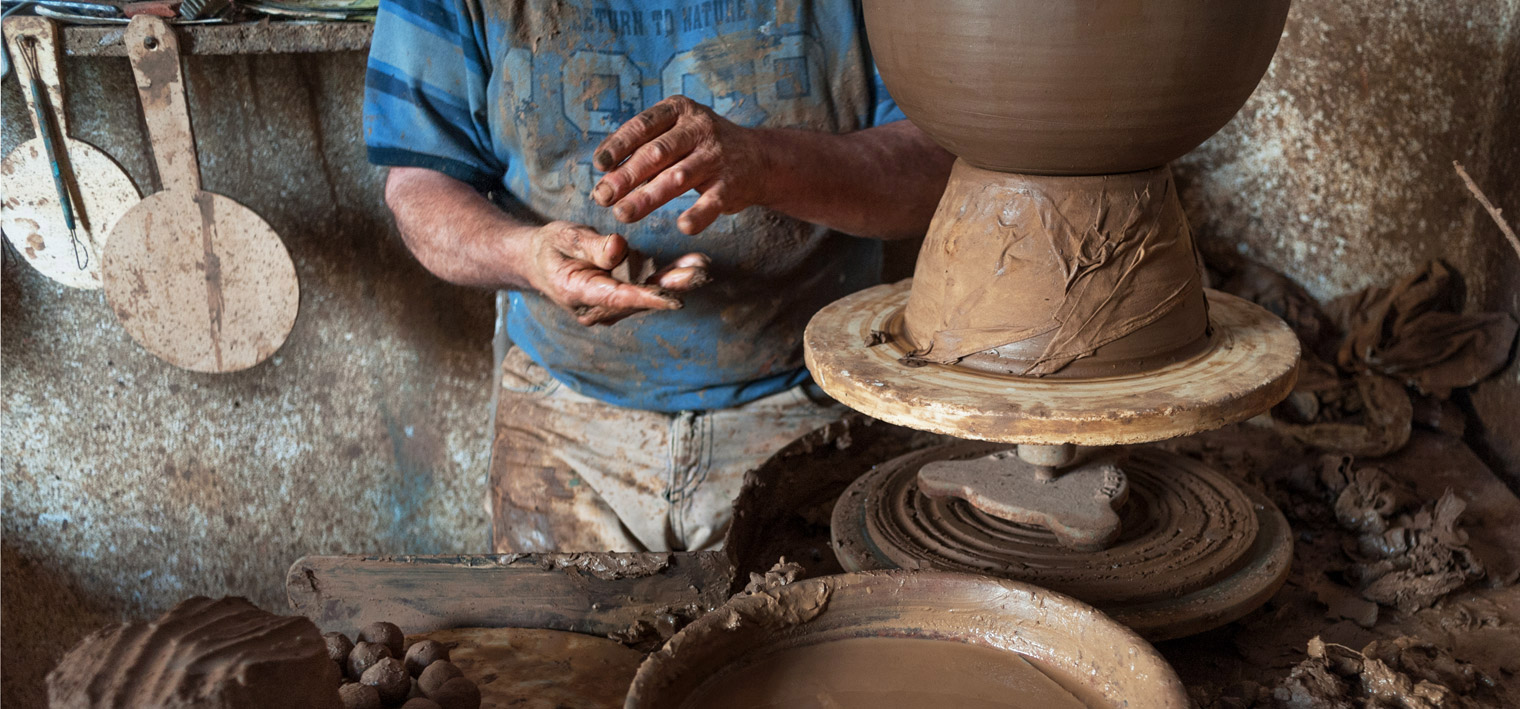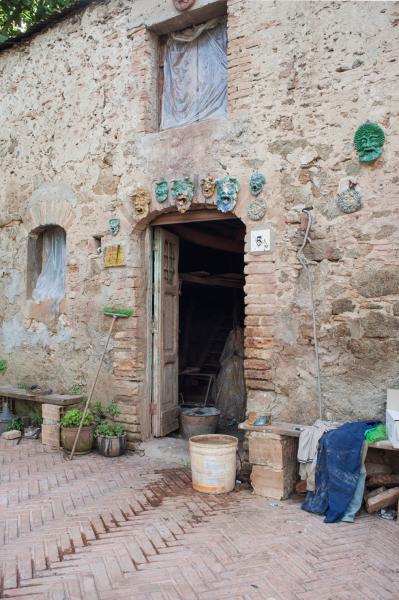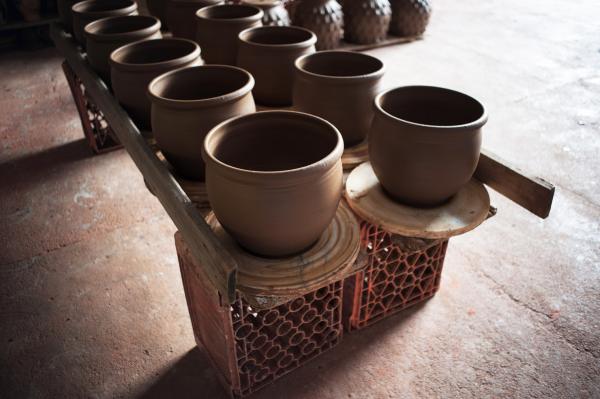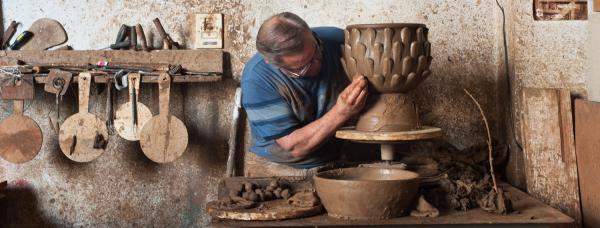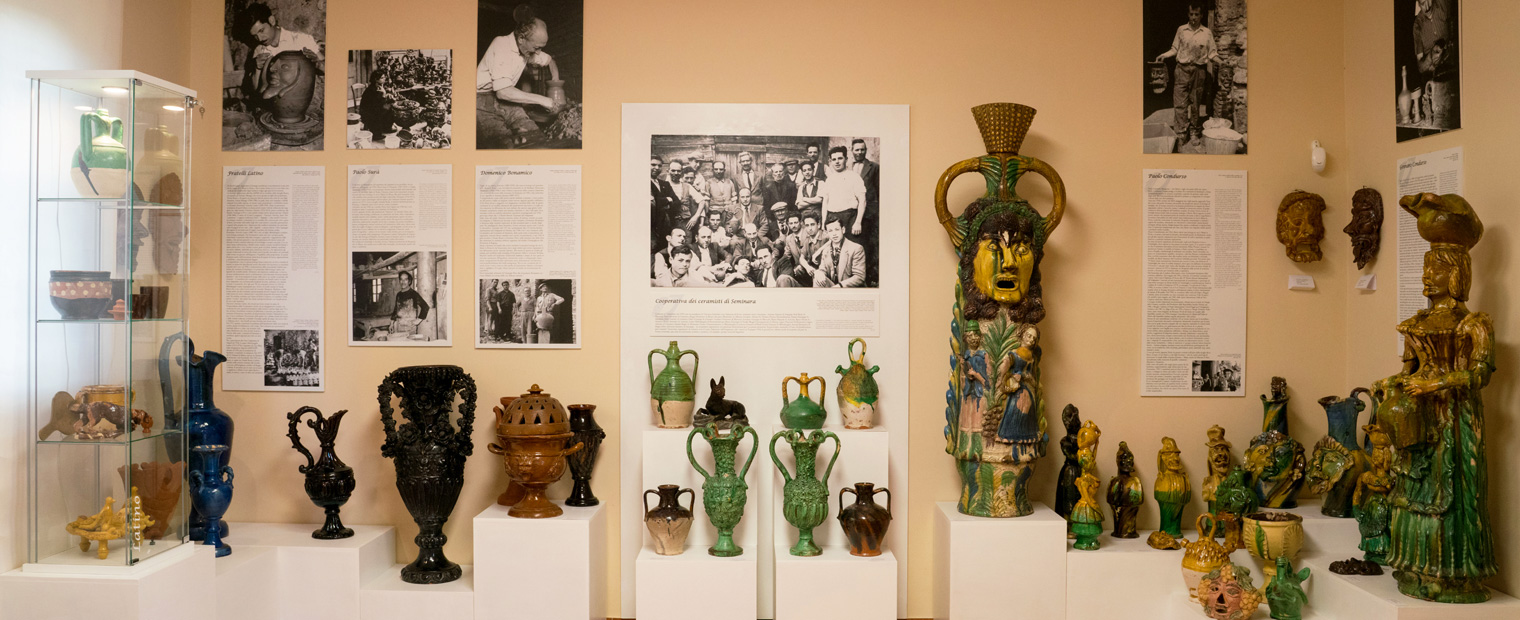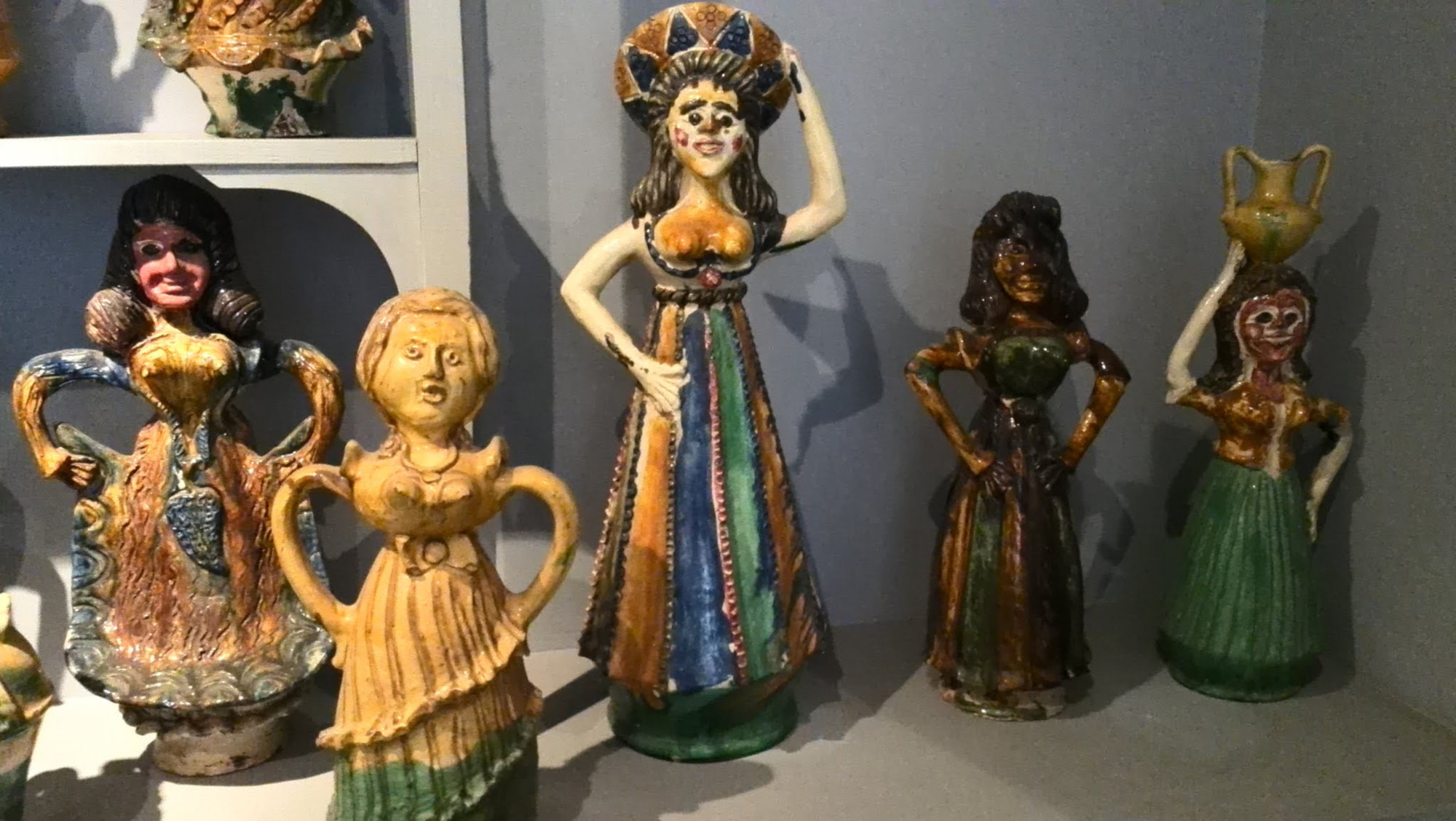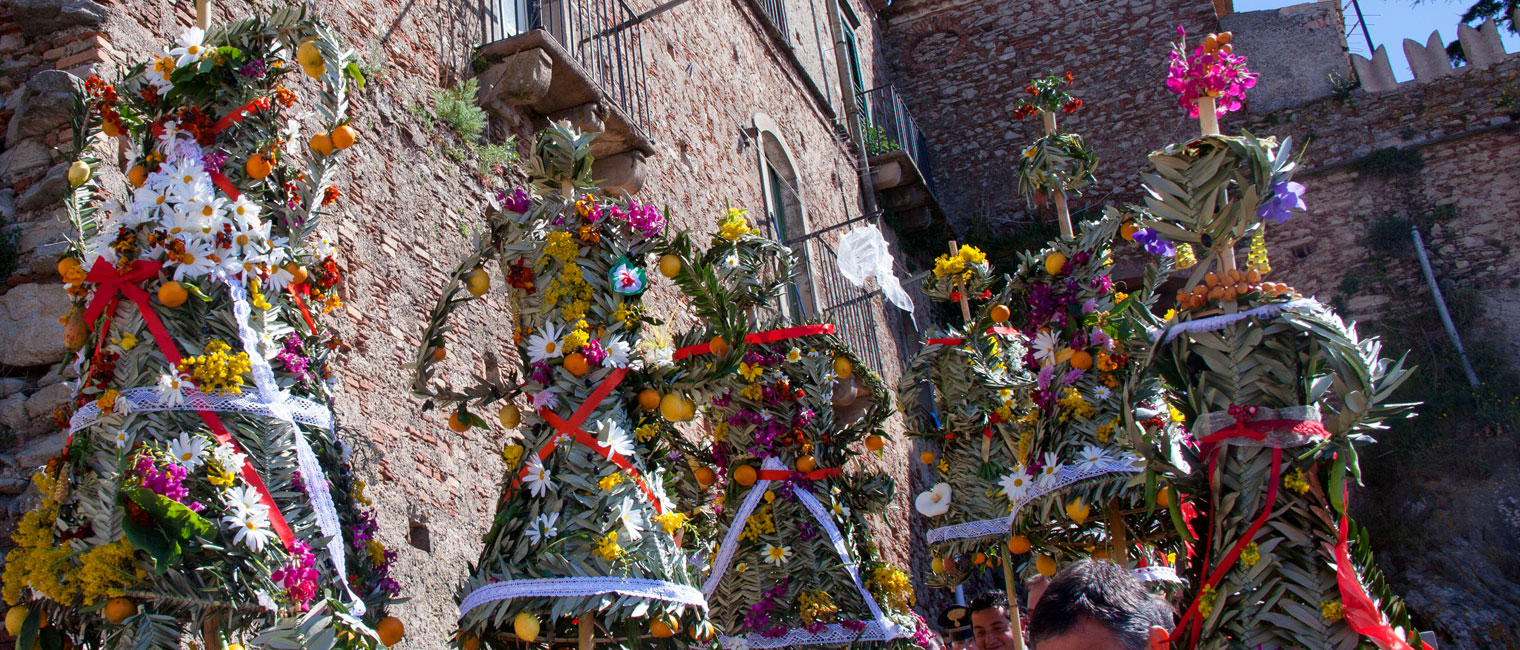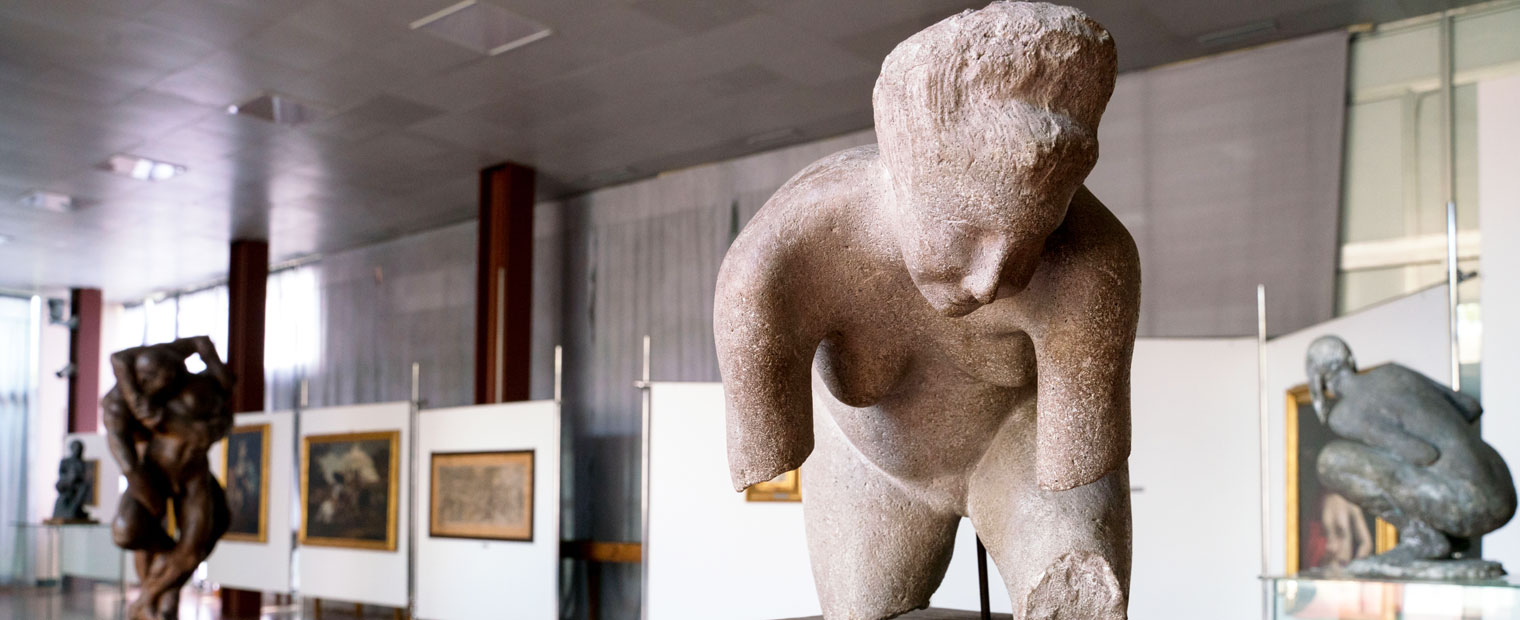Seminara ceramics are famous all over the world and date back many centuries, thought we do not know when making decorative and artistic ceramics became the main livelihood of this Calabrian town. We know for certain that in 1746 there were at least 23 pottery shops. In 1777, the English traveller Henry Swinburne, passing through Seminara, wrote of “a ferment of pottery shops”. In fact, throughout the 18th century, Seminara was as famous for its ceramics as Caltagirone was in Sicily. The disastrous earthquake of 1783 destroyed the town to the ground. One of the noblest and wealthiest towns in the Reggio area was practically wiped off the face of the Earth, and its art and culture went with it.
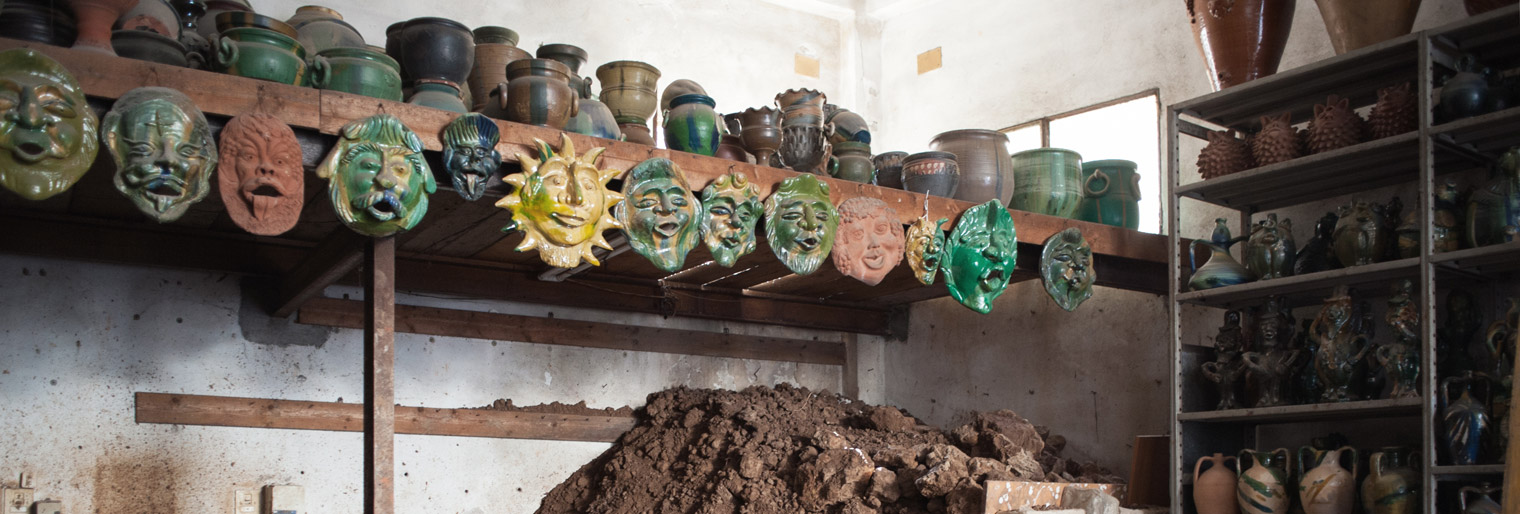
A diehard tradition
Reconstruction of the city was slow, but in the mid-1800s there was already a new and intensive production of ceramics, mostly in the Pignatari district. In 1880, the town had 28 kilns with their respective mills for processing the glazes for colouring. The pottery business employed many families. In fact, the people of Seminara founded a cooperative of ceramists in the mid-1900s consisting of 60 artisansfrom the town. . Among the master ceramists were Domenico Ditto, Antonio Ferraro and Antonio Latino. Today mainly the Condurso and Ferraro families carry on this ancient tradition. While the Condursos are the faithful followers of the ancient techniques and shapes (with a prevalence of greens and blues and yellows), the Ferraros, though faithful to the ancient traditions and colours on one line of ceramic products, have introduced innovative techniques that lend a unique and characteristic style (with a predominance of yellows) to their pottery production
DID YOU KNOW THAT ...?
The apotropaic masks produced today in the town have a very early origin. In Greek, ‘apotropaic’ means “send away” in fact, these masks were hung outside the doors of people’s houses because it was thought they would send away evil spirits who had come to disturb the quiet life of the families of the town.
An art that has survived over the centuries
Today's knowledge of the ceramics of Seminara includes artefacts dating back to the 19th century (the oldest of the preserved pieces). However, most likely the typologies attested to that century repeat forms, glazing techniques and decorations of the previous centuries. Unfortunately, the 1783 earthquake that destroyed the town of Seminara left a huge gap in the historical reconstruction of this ancient tradition. The Museo della Ceramica di Seminara, opened in 2019, traces the history of this ancient tradition.
Archaic traditions and sentiments take shape
Among the shapes produced are: amphorae (lancelle), mugs (cannate), often with ornamentation in relief (called cuccumi), small jugs with beaks (bumbuleji), hedgehog-shaped pitchers (porroni a riccio), doughnut-shaped water-flasks, lanterns, anthropomorphic bottles and flasks (babbaluti), grotesque masks (apotropaic masks), balcony pots and vases (graste). We also find fish-shaped flasks that had a purely votive purpose as they were intended for pilgrims on their way to venerate San Rocco in Rosarno. Finally, a type that seems almost provoking, the gappacumpari (“drink if you can”): a wine jug with a series of holes from which only very skilled drinkers can drink.
